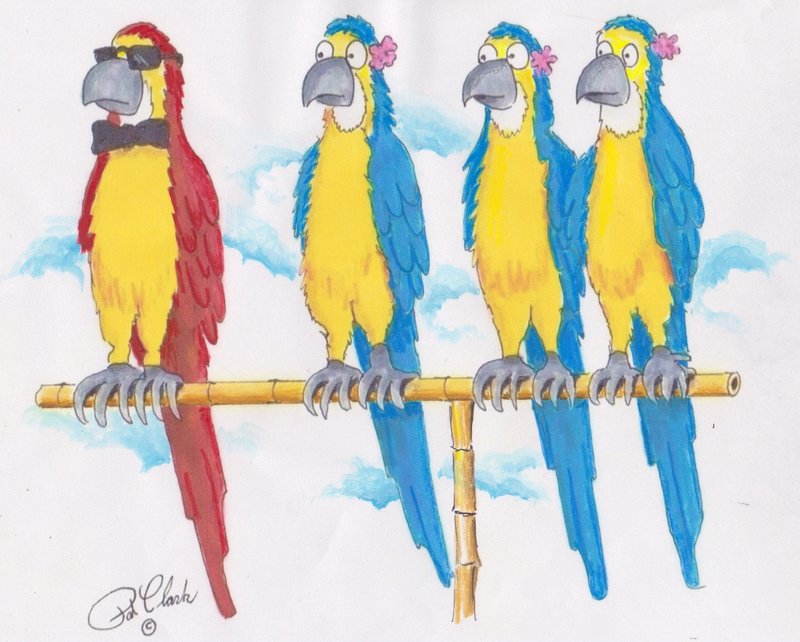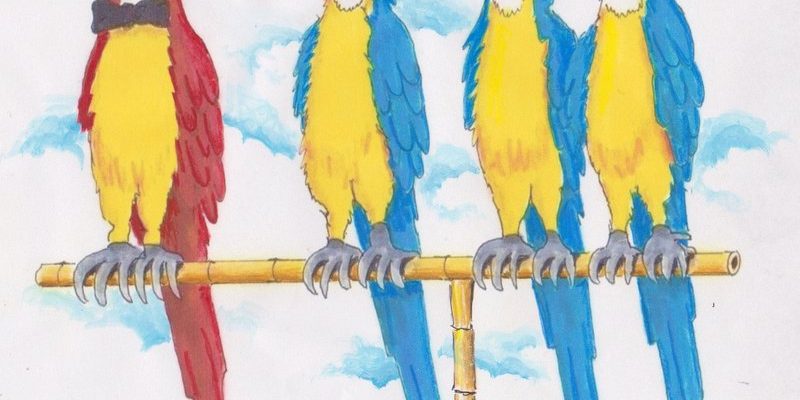
Let’s take a journey through the evolution and history of the parrot, from their ancient ancestors to their roles in today’s world. You might be surprised to learn how these feathered friends have adapted and thrived in various environments and cultures. So, grab your favorite beverage, and let’s dive into the fascinating world of parrots.
The Origins of Parrots
To truly appreciate parrots, we need to start way back in time. *Parrots belong to the order Psittaciformes*, which includes around 393 species. These birds are believed to have evolved roughly *60 million years ago,* shortly after the dinosaurs went extinct. Their ancestors likely inhabited tropical and subtropical regions, and over time they spread across various continents.
Here’s the thing: parrots are closely related to several other bird families, like cuckoos and kingfishers. However, what sets them apart are their unique adaptations. For instance, their zygodactyl feet—where two toes point forward and two backward—help them grasp branches and climb with ease. This specialized foot structure allows them to navigate the treetops of rainforests, where they primarily live. Their feeding habits have also evolved, with many species adapted to consuming seeds, fruits, and nuts, which are abundant in their habitats.
You might be wondering how parrots have managed to become so widespread. Their adaptability is key! Over millions of years, parrots have evolved various traits that allow them to thrive in different environments, from the lush Amazon rainforest to arid Australian landscapes. This adaptability has contributed to the incredible diversity of parrot species we see today.
The Role of Parrots in Ancient Cultures
Parrots haven’t just been beautiful additions to nature; they’ve also played significant roles in various cultures throughout history. For example, ancient civilizations like the Egyptians and Aztecs revered parrots for their striking colors and intelligence. In ancient Egypt, some birds were believed to be sacred and associated with the gods, often featured in art and artifacts.
In Mesoamerican cultures, parrots were symbols of power and wealth. The Aztecs and Maya kept them as pets and used their feathers to create elaborate headdresses and ceremonial attire. The vibrant colors of the feathers were not just beautiful; they also held great cultural significance. By decorating chiefs and warriors with parrot feathers, these societies highlighted their status and connection to the divine.
Moreover, parrots have made their mark in literature and folklore. From Aesop’s Fables to the tales of *The Parrot and the Cat,* these birds have been depicted as wise and witty characters. Their ability to mimic human speech often symbolizes communication and intelligence, showing us just how valued these birds have been throughout history.
The Discovery of New Species
As explorers ventured into new territories, they discovered a variety of parrot species previously unknown to them. The 15th century marked an exciting time for avian discovery, especially during the Age of Exploration. European explorers like Columbus encountered parrots in the Caribbean, leading to increased interest in these birds back home.
From *Amazon parrots* to *African grey parrots,* many species were documented and brought back to Europe, sparking fascination with their beauty and intelligence. This discovery wave was not just about finding new birds; it also helped highlight the incredible biodiversity of our planet.
Here’s the catch: the increasing demand for exotic pets has had a significant impact on parrot populations. Sadly, many species are now threatened or endangered due to habitat loss and illegal poaching. As people became enamored with these colorful birds, their populations began to dwindle, prompting conservation efforts in recent years.
The Parrot in Modern Society
Today, parrots continue to captivate us, both as pets and in the wild. Owning a parrot can be a rewarding experience, but it’s essential to recognize the responsibility that comes with it. Parrots are not just beautiful animals; they are highly intelligent and social creatures that need attention and stimulation.
You might have seen parrots on social media, demonstrating their impressive speaking abilities or even performing tricks. While it’s delightful to see these talents, it’s crucial to ensure these birds are kept in environments that cater to their needs. Many parrot owners invest time in training and socialization, recognizing that a well-cared-for parrot can be a beloved companion for decades.
Moreover, conservation efforts have gained momentum as people become more aware of the challenges these birds face. Organizations around the world work tirelessly to protect parrot habitats, promote responsible ownership, and raise awareness about the importance of preserving these beautiful creatures for future generations.
The Unique Biology of Parrots
So, what makes parrots so special on a biological level? For starters, their vibrant colors come from both pigments and structural coloration. The bright hues we admire are not just a product of their diet; the microscopic structure of their feathers interacts with light, creating those stunning iridescent shades. This feature makes them stand out in their lush habitats.
Additionally, parrots are known for their remarkable vocal abilities. They possess a remarkable vocal organ called the syrinx, which allows them to produce a wide range of sounds. Some species, like the *African grey parrot*, are particularly noted for their ability to mimic human speech convincingly. This vocal mimicry is not just a party trick; it’s a reflection of their social nature. In the wild, parrots communicate with each other using various calls to maintain group cohesion.
The intelligence of parrots is another fascinating aspect. Studies suggest that parrots can solve complex problems and even understand cause-and-effect relationships. For instance, they can use tools to access food or navigate intricate puzzles. Their cognitive skills rival those of some primates, showcasing just how advanced these birds really are.
Conservation Challenges and Efforts
As we dive deeper into the history of parrots, it’s impossible to ignore the challenges they face today. Habitat destruction, climate change, and illegal trapping significantly threaten many parrot species worldwide. The demand for exotic pets has led to serious declines in wild populations, making conservation efforts vital.
Organizations like the *World Parrot Trust* and the *BirdLife International* are at the forefront of these efforts. They work to protect wild habitats, promote breeding programs, and educate the public about responsible pet ownership. It’s crucial to support these initiatives to ensure that future generations can enjoy the beauty and intelligence of parrots.
You might be wondering, “What can I do to help?” Even small actions can make a difference. Supporting ethical wildlife organizations, spreading awareness about conservation efforts, or even adopting a parrot from a rescue organization instead of a pet store can significantly impact their future. Every bit counts!
The evolution and history of parrots is a journey full of vibrant colors, fascinating adaptations, and cultural significance. From their ancient origins to their roles in modern society, these birds have captured our hearts and minds. They remind us of the incredible diversity of life on Earth and the importance of preserving it.
As we continue to learn about and appreciate parrots, let’s also take a moment to consider our role in their story. By supporting conservation efforts, practicing responsible pet ownership, and advocating for their protection, we can help ensure that future generations will marvel at these beautiful creatures. Remember, every little bit helps, and together, we can make a difference for our feathered friends.

